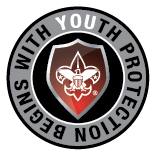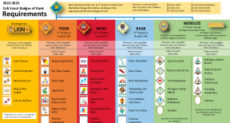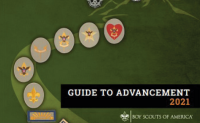 By now, you should have taken the new Youth Protection Training course online to bring your training current. As we’ve discussed before, everyone must take the new course, which was released in February, regardless of the expiration date of your YPT. If you haven’t taken the new YPT, do it now!
By now, you should have taken the new Youth Protection Training course online to bring your training current. As we’ve discussed before, everyone must take the new course, which was released in February, regardless of the expiration date of your YPT. If you haven’t taken the new YPT, do it now!
The recent revisions to the Boy Scouts of America’s youth protection practices include updates to the policy requiring two adult leaders at all Scouting activities. The national youth protection team has provided some important clarifications and answered many questions about the new policy:
(Effective October 1, 2018) Two registered adult leaders 21 years of age or over are required at all Scouting activities, including meetings. There must be a registered female adult leader over 21 in every unit serving females. A registered female adult leader over 21 must be present for any activity involving female youth. Notwithstanding the minimum leader requirements, age- and program-appropriate supervision must always be provided.
You’ll recall that the BSA has always required a registered female leader to be present for activities involving females, but this could have easily escaped your notice if you weren’t involved in Venturing or Sea Scouting, which offered girls and young women the opportunity to participate. But now that we have girls in our Cub Scout packs, and soon in Scout troops, we need to be aware of the requirement. Some have considered it odd that female leaders are explicitly required for female participants but not the other way around, i.e. it’s permissible for male participants to be led by female leaders with no male leaders present. The BSA, however, feels that the current policy is the most appropriate, as it has been the case all along for Venturing.
The rules regarding two-deep leadership will change a bit as of October 1. While previously an activity (such as a den meeting) could be led by a registered leader and the parent of a Scout, going forward it’ll have to be two registered leaders – including that second parent! The BSA goes on to say that if two leaders aren’t available. the activity has to be cancelled. Exceptions are made for things like fundraising (popcorn show and sell) or merit badge counseling, where a parent of a Scout can be the second adult (no more solo counselor with just a Scout and his buddy – there have to be other adults present). And Lion and Tiger parent partners don’t count as registered leaders unless they are actually registered as, say, an assistant Den Leader. The new requirements make for a great reason to register parents, or at least the ones who actively participate, as assistant Den Leaders, with the added benefit that they’ll be required to take Youth Protection Training.
You’ll need to be mindful that for many units – Cub Scout packs in particular -Â this could result in an increase in the number of registered adults on your roster. You’ll need to make sure you budget for the registration fees for these additional adult leaders and encourage them to take not only the required Youth Protection Training but the position-specific training as appropriate. After all, every Scout deserves a Trained leader!
While still emphasized is what hasn’t changed – no one-on-one contact with youth other than your own child – it’s now stated that we as registered Scouters are expected to follow that practice even when not at a Scouting event if Scouts are present. If there’s a sleepover at your house, or you’re going fishing with your son and his buddy, you can’t be alone with youth other than your own son or daughter even though it’s not a pack or troop outing. The BSA reminds us that this practice is as much for the protection of the adults as it is for youth.
There’s also clarification about whether youth can drive other Scouts to events. Where previously it was permissible for youth 16 and older with parent permission, it’s now required that drivers be over the age of eighteen.
A summary of the changes and answers to a few questions can be found here. The Guide to Safe Scouting is still the primary authority. As a fluid document, frequent updates are made to the online version of the Guide. The downloadable PDF version (and certainly the print copy) can lag behind, but the online version is always the most current.
This post first appeared on Bobwhite Blather.




